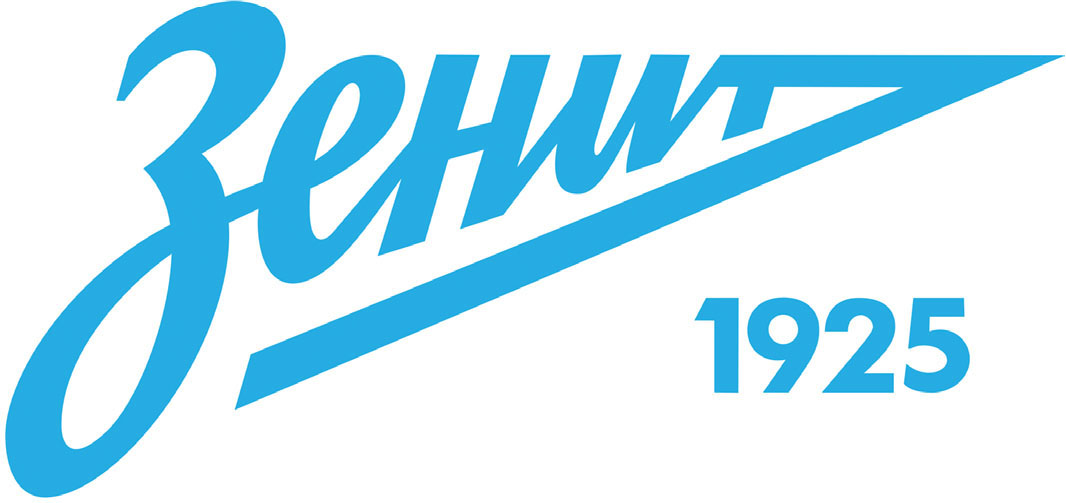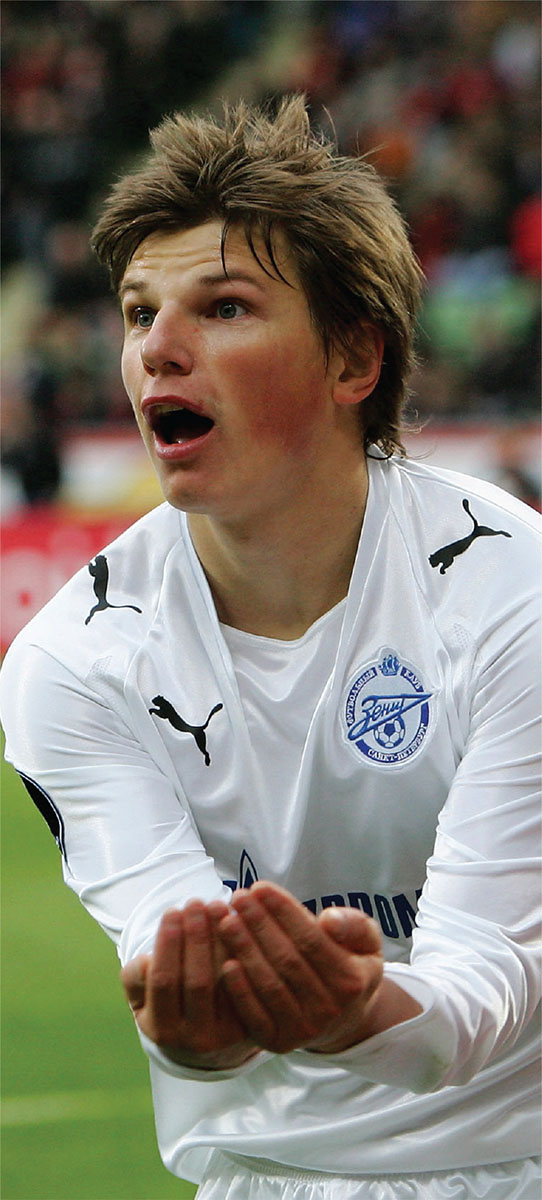
ZENIT SAINT PETERSBURG
THE ARROW FROM SAINT PETERSBURG
Russian national football got an international boost during the 2008 European Championships, partly thanks to the star from Zenit Saint Petersburg, Andrey Arshavin. The Russian national team, led by Arshavin, impressed, achieving success in their group and overcoming Holland in the quarter-final to reach the semi-final. Many of the players responsible for this success came from the reigning league champions – apart from Arshavin, there was Aleksander Anyukov, Konstantin Zyryanov, Roman Shirokov and Vyacheslav Malafeev, players who had shocked Europe earlier that spring by winning the UEFA Cup. Rangers had been easily brushed aside 2-0 in the final in Manchester, and Arshavin was named Man of the Match.
Between 2009 and 2015, the Northern Russian club won a further three league titles and never finished outside the top three. Hefty investments were made in the shape of established global stars like Hulk, Axel Witsel and Ezequiel Garay. Under coaches like Luciano Spalletti and André Villas-Boas, the team enjoyed several campaigns in the Champions League. But the life of the club hasn’t always been so glamorous. Zenit was born out of the steel industry of Leningrad (as Saint Petersburg was then called) and for a long time they were unable to make an impact in the Soviet Union. The cup win in 1944 and the league title in 1984 were the only exceptions. After the fall of the Soviet Union, things improved thanks to money from Gazprom. The Russian gas giant took over Zenit in 2005 and has since then financed the club’s successes.
CLUB: FC Zenit
NICKNAMES: Sine-Belo-Golubye (the Blue-White Sky-Blues) and Zenitchiki (the Anti-Aircraft Gunners)
FOUNDED: 1925
STADIUM: Krestovsky Stadium, Saint. Petersburg (64,468 capacity)
HISTORIC PLAYERS: Andrey Arshavin, Aleksandr Kerzhakov, Roman Shirokov, Anatoliy Tymoshchuk and Hulk

1925–1936. Zenit’s first emblem represented a flag with the club’s colours, which symbolised the steel industry. Across the flag was written Stalinets, a word taken from the club’s roots in the steel industry of Saint Petersburg.

1940–1977 and 1978–1988. During the Second World War, the so-called Zenit arrow was introduced, alluding to the way the emblem was stylised. The crest was adopted when the club officially changed name to Zenit in 1939. Nearly 40 years later it was updated.

1988–1991. When the winds of change blew in the Soviet Union, the club changed their emblem again. For the first time, a football appeared in the crest, and the golden ship on the Admiralty building of Saint Petersburg was depicted. From 1988 up to the fall of the Soviet Union in 1991, Leningrad was written on the emblem, but when the club won promotion to the top division, it read ‘Saint Petersburg’.

1998–2013. The club crest was updated in 1998 and the colours reverted to blue and white, while the ship was reduced in size.

2013–present. On 11 July, 2013, Zenit’s new emblem was unveiled at St Peterburg’s steelworks, a symbolic act celebrating the club’s origins. The new club crest was designed as a tribute to former times. A star was added in 2015 after the club’s fifth league title. During the spring of 2015, Zenit got into a Twitter storm with the Daily Mail after the latter listed the team’s logo as one of the 10 ugliest in the world. Zenit responded by declaring the Daily Mail’s emblem to be the ugliest in the world of newspapers.

Andrey Arshavin celebrates after scoring against Bayer Leverkusen in the 2008 UEFA Cup quarter-finals. In a remarkable year, the Russian side won the UEFA Cup and UEFA Super Cup, beating Rangers and Manchester United in the respective finals.